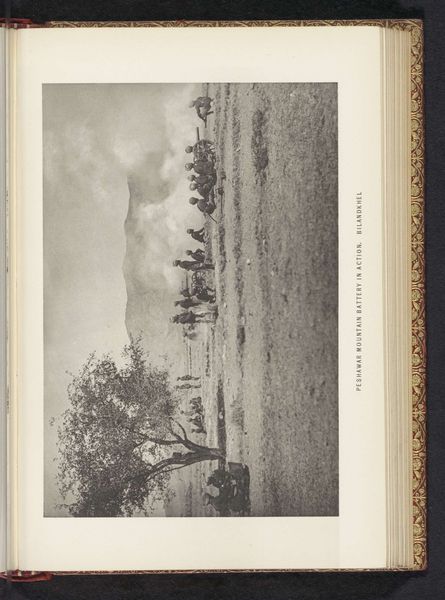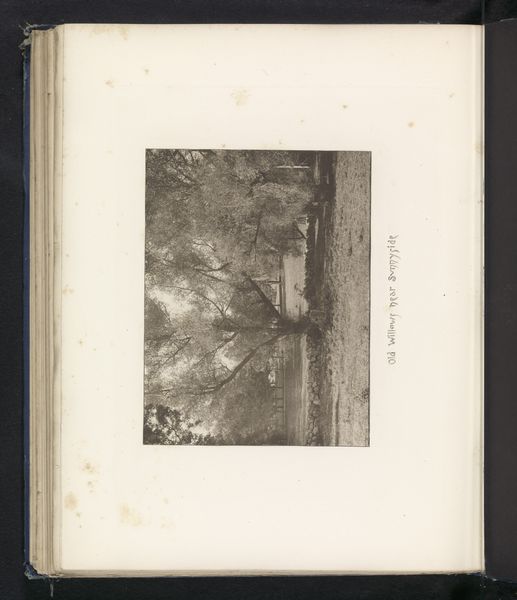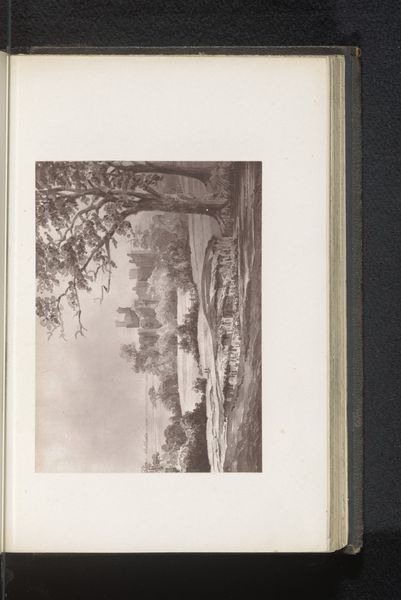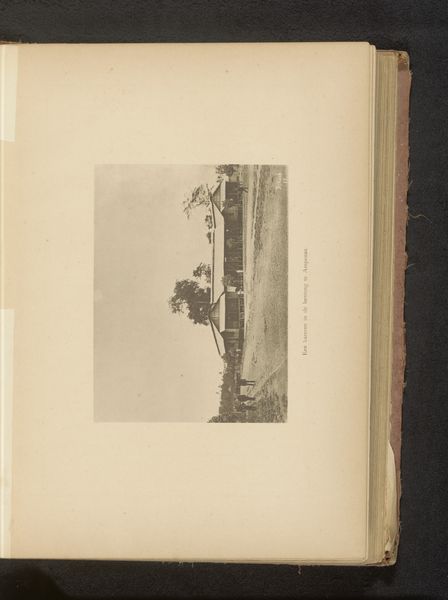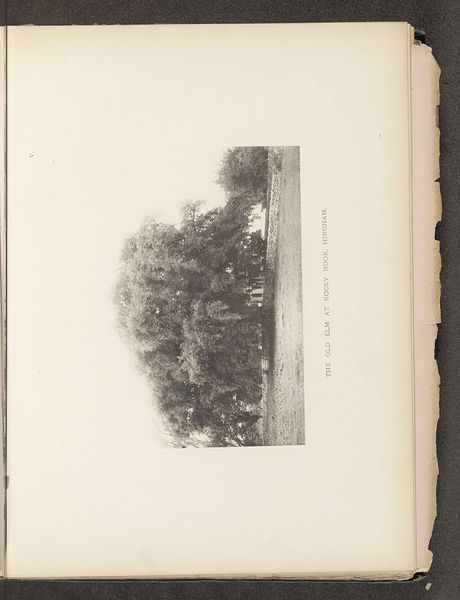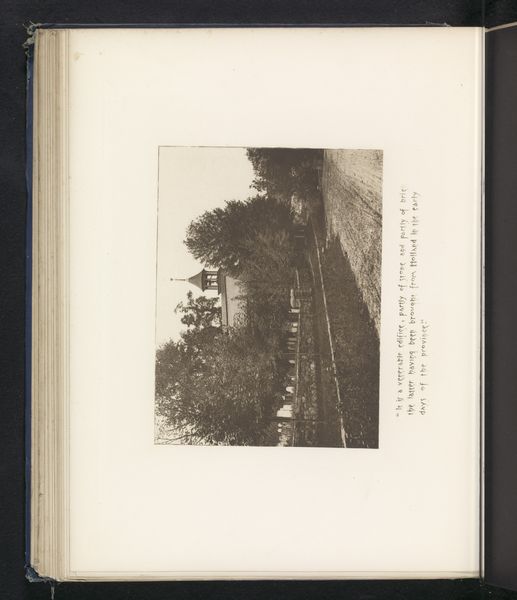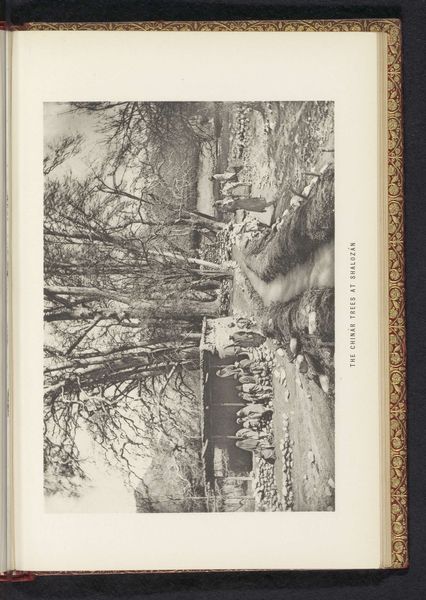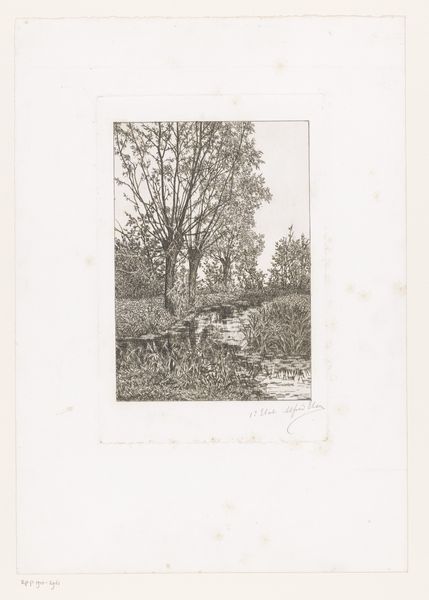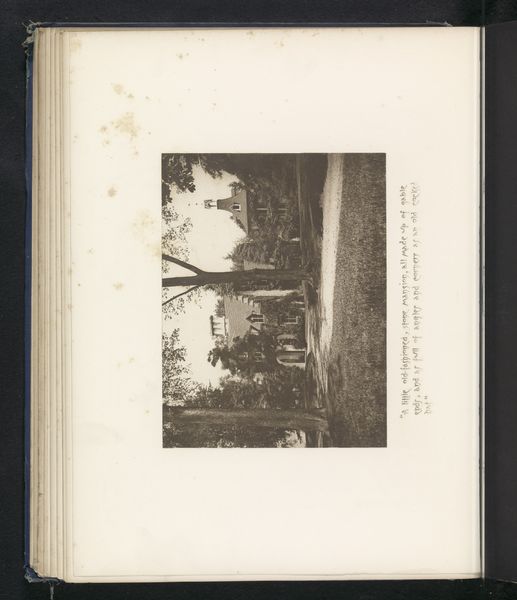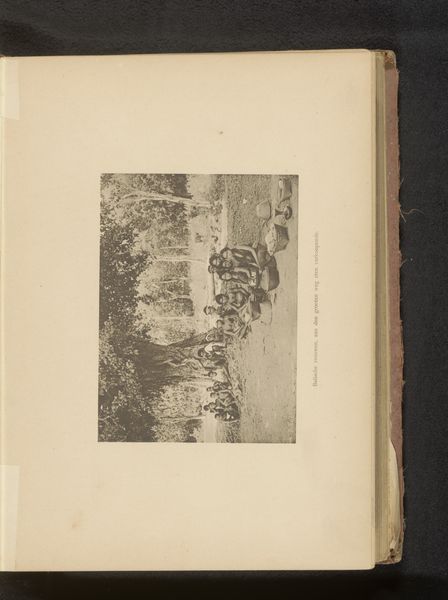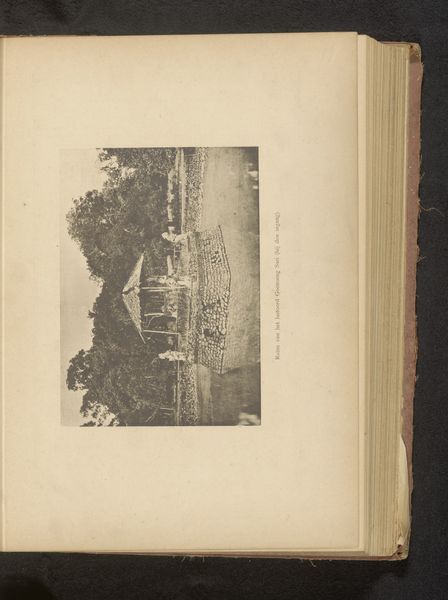
#
aged paper
#
toned paper
#
ink paper printed
#
coloured pencil
#
watercolour bleed
#
watercolour illustration
#
golden font
#
pencil art
#
watercolor
#
historical font
Dimensions: height 120 mm, width 170 mm
Copyright: Rijks Museum: Open Domain
Frederick Saint John Gore created this photograph of Sikaram from Shoblán village sometime before his death in 1903. The image presents a seemingly straightforward depiction of rural life, but its cultural significance lies in the context of British colonial engagement with the Indian subcontinent. During this period, photography served as a tool for both documentation and control. The British administration employed photography to survey landscapes, map resources, and record the lives of the indigenous population. This image, in its composition and subject matter, participates in this colonial project. It presents an ordered view of the village, subtly reinforcing a sense of British authority and knowledge over the territory. The very act of capturing and cataloging such images contributed to the construction of a colonial archive, shaping perceptions of India for audiences back in Britain. Understanding this photograph requires us to delve into historical archives and colonial records. By examining the photographer's background, the motivations behind the image, and the context in which it was produced, we can begin to unpack the complex layers of meaning embedded within this seemingly simple landscape.
Comments
No comments
Be the first to comment and join the conversation on the ultimate creative platform.
